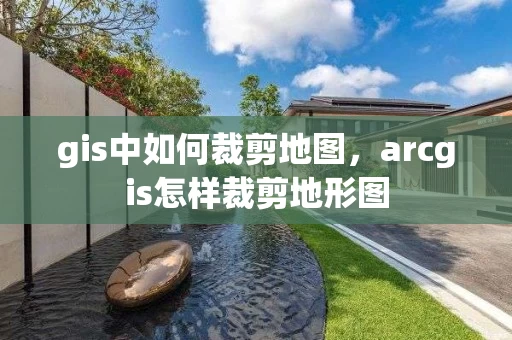本篇文章给大家谈谈gis地图色块,以及gis调颜色对应的知识点,希望对各位有所帮助,不要忘了收藏本站喔。
目录一览:
- 1、ArcGIS中的几种分类 ***
- 2、一幅只有轮廓的中国地图怎样用arcgis在各个省涂上想要的颜色
- 3、arcgis 10.0如何 *** 四色地图呢
- 4、mapgis中怎么填充颜色,是区域地质图。
- 5、在arcgis制图中,以下要素的填充色都是什么? 城市、建制镇、村庄、采矿用地、风景名胜及特殊用地
ArcGIS中的几种分类 ***
Equal Interval classification - GIS Wiki | The GIS Encyclopedia
The equal interval classification method divides attribute values into equal size ranges.Unlike quantile classification(分位数分类法), the number of records that fall into each category (or bin) will differ. Equal Interval Classification in GIS - GIS Geography
相等间隔会将属性值的范围划分为 若干个大小相等的子范围 。您可以指定间隔数,ArcGIS 将基于值范围自动确定分类间隔。例如,如果为取值范围为 0-300 的字段指定三个类,ArcGIS 将创建三个类,其取值范围分别为 0–100、101–200 和 201–300。
ArcGIS PRO文档:Equal interval is best applied to familiar data ranges, such as percentages and temperature . This method emphasizes the amount of an attribute value relative to other values. For example, it shows that a shop is part of the group of shops that make up the top one-third of all sales. (相等间隔最适用于常见?的数据范围,如百分比和温度。这种 *** 强调的是某个属性值相对于其他值的量。例如,它可显示某个商店为一组商店的一部分,而该组商店的销售额占总销售额的三分之一。)

添加微信好友, 获取更多信息
复制微信号
*** :Equal interval is useful when distribution of the data has a rectangular shape in the histogram(数据的分布在直方图中呈矩形,也就是说分布均匀) . However, in geography, equal interval is most common when the classification units are nearly equal in size.
One advantage of using equal interval classification is that the steps to compute the intervals can easily be completed using a calculator or pencil and paper. A second advantage is that when the results of this classification are projected onto a map they are easily interpreted. Another advantage is that the legend limits contain no missing values or gaps. This permits faster map interpretation, but might create confusion concerning the bounds of each class.
The main disadvantage of this classification type is that it fails to consider how data are distributed along the number line(没有考虑数据是如何沿着数轴分布的,对可视化效果不友好,可能会出现大量同一色块的分布) . For example, the map to the right shows the percentage of total homes in Arkansas which are mobile homes. There are many areas that fall into the two lower percentages, leaving most of the state the two shades of green. If a different classification was used, the data displayed in the map could be shown more effectively.
Use defined interval to specify an interval size to define a series of classes with the same value range. For example, if the interval size is 75, each class will span 75 units. The number of classes, based on the interval size and maximum sample size, is determined automatically. The interval size must be *** all enough to fit the minimum number of classes allowed, which is three.
Quantile - GIS Wiki | The GIS Encyclopedia
In a quantile classification , each class contains an equal number of features . (每一个类别中的包含被分类对象的数目相等)
A quantile classification is well suited to linearly distributed data . Quantile assigns the same number of data values to each class. There are no empty classes or classes with too few or too many values. 比如,分位数分类法适用于区分人口密度这类在其范围内均匀分布的数据
Using the quantile classification method gives data classes at the extremes and middle the same number of values. Each class is equally represented on the map and the classes are easy to compute. Quantile classification is also very useful when it comes to ordinal data . Ordinal Data: Definition, Analysis and Examples
When using quantile, classification gaps can occur between the attribute values . These gaps can sometimes lead to an over-weighting of the outlier in that class division [3] .
Another disadvantage is that if the number of classes is not correctly created two areas with the same value can end up in different groups.(由于组内的数目是确定的,有相同属性的对象可能被分到不同的组内) For example, imagine you have data for the number of fast food restaurants in each county for 21 counties and you want to divide the counties into 7 groups with 3 counties in each group. If 4 counties each have exactly 10 fast food restaurants one of those counties will be classified in a different group, because there are only 3 counties per group, despite the values being the same.
Jenks Natural Breaks Classification - GIS Wiki | The GIS Encyclopedia
With natural breaks classification (Jenks) , classes are based on natural groupings inherent in the data. Class breaks are created in a way that best groups similar values together and maximizes the differences between classes(类内差异小,类间差异大). The features are divided into classes whose boundaries are set where there are relatively big differences in the data values.
The method reduces the variance within classes and maximizes the variance between classes.It is also known as the goodness of variance fit (GVF) , which equals the subtraction of SDCM (sum of squared deviations for class means) from SDAM (sum of squared deviations for array mean). (该 *** 减少了类内的方差,并使类间的方差更大化。它也被称为 方差拟合优度(GVF) ,等于SDCM(类均值的平方偏差和)减去SDAM(数组均值的平方偏差和))
Jenks classification is not recommended for data that have a low variance. 不适用于数据方差很小的情况下
Natural breaks are data-specific classifications and not useful for comparing multiple maps built from different underlying information.
Because natural breaks classification places clustered values in the same class, this method is good for mapping data values that are not evenly distributed.
Geometric Interval Classification - GIS Wiki | The GIS Encyclopedia
The geometrical interval classification scheme creates class breaks based on class intervals that have a geometric series. The geometric coefficient in this classifier can change once (to its inverse) to optimize the class ranges. The algorithm creates geometric intervals by minimizing the sum of squares of the number of elements in each class. This ensures that each class range has approximately the same number of values in each class and that the change between intervals is fairly consistent.
此算法专门用于 处理连续数据 。这是相等间隔、自然间断点分级法 (Jenks) 和分位数间的折衷 *** 。其在突出显示中间值变化和极值变化之间达成一种平衡,因此生成的结果外形美观、地图内容详尽
This classification method is useful for visualizing data that is not distributed normally, or when the distribution is extremely skewed. 这种分类 *** 对于显示 非正态分布的数据 或当 数据的分布极其倾斜时 非常有用。
The Geometrical intervals classification is better than quantiles for visualizing prediction surfaces, which often do not have a normal data distribution. Geometric interval works best when the data is spread over a large area and is not well distributed.
标准差分类 *** 用于显示 要素属性值与平均值之间的差异 。ArcMap 可计算平均值和标准差。将使用与标准差成比例的等值范围创建分类间隔 - 间隔通常为 1 倍、1/2 倍、1/3 倍或 1/4 倍的标准差,并使用平均值以及由平均值得出的标准差。
通过强调平均值以上和以下的值,标准差分类有助于显示哪些位置高于或低于平均值。
Use this classification method when it is important to know how values relate to the mean , such as population density in a given area, or comparing foreclosure rates across the country. For greater detail in your map, you can change the class size from 1 standard deviation to 0.5 standard deviation.
一幅只有轮廓的中国地图怎样用arcgis在各个省涂上想要的颜色
首先你要选择坐标系,坐标系选好后,然后运用绘图工具比照各省轮廓绘出省界线,然后将图层根据省份名称字段进行符号化呀,想设置什么颜色可以自己选择了。

arcgis 10.0如何 *** 四色地图呢
根据不同的图层设置符号、线型、颜色,然后在布局窗口输出就是你需要的地图了
mapgis中怎么填充颜色,是区域地质图。
如果你不需要过拓扑检查就按如下操作:
1.新建区文件(WP),并设置成编辑状态。
2,点工具栏里边的区-图形造区-选择所需造区的线边界,然后点右键就出来区了。
3,在区-修改区参数中修改所需填充的颜色
4,如果要过拓扑造区检查,就必须用区-线工作区提取弧段进行造区。
在arcgis制图中,以下要素的填充色都是什么? 城市、建制镇、村庄、采矿用地、风景名胜及特殊用地
城市电子地图大多是大比例尺的地图,涉及到的地图要素主要有居民地、道路、注记、水系、植被、境界、要素点等。下面列出了这些要素的主要配色方案:
l 居民地:粉红色、浅棕色
l 道路:浅黄色、浅棕色或者白色
n 不同等级的道路可以将色彩逐级加深,例如三级道路用浅黄色、二级道路用土黄色、一级道路用深棕色等。
l 注记:
n 公园名称的标注可以用深绿色楷体字表示;
n 单位名称的标注可以用宋体,对于 *** 机构的用红色宋体字表示;
n 山脉、地名名称的标注可以用黑色黑体字表示。
l 水系:
内陆河流、湖泊可以用浅蓝色; 海洋可以用深蓝色;
l 植被:主要使用绿色表示。
l 要素点:主要用矢量符号表示。
城市电子地图配色的基本原则是:色彩不要太过浓重,尽量选择一些浅淡、素雅的颜色进行搭配,这样对于使用者来说看起来比较舒服,不会有太刺眼的效果。
gis地图色块的介绍就聊到这里吧,感谢你花时间阅读本站内容,更多关于gis调颜色、gis地图色块的信息别忘了在本站进行查找喔。








